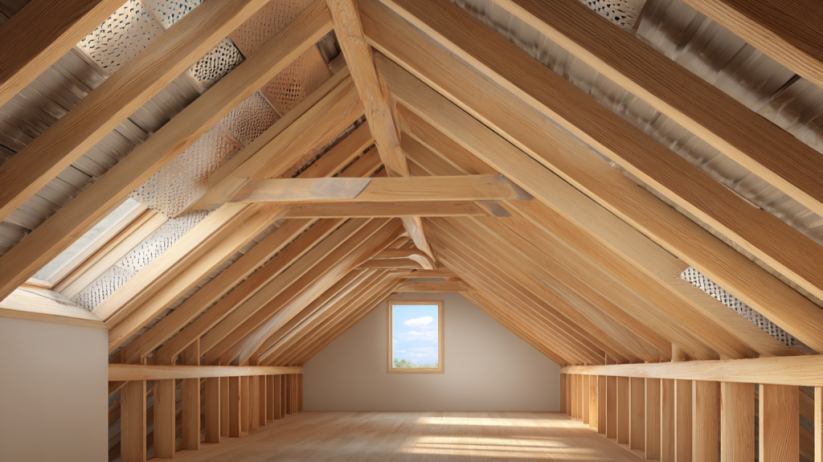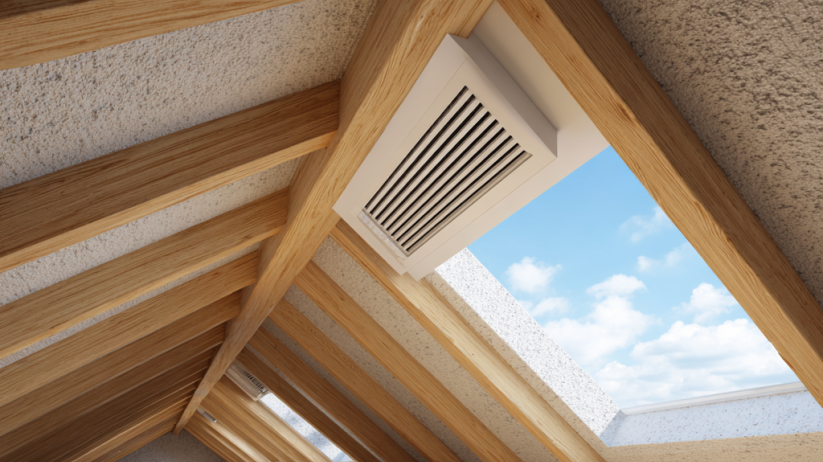Picture a hot July afternoon in Maryland. The air feels thick enough to slice, humidity is doing its best impression of a wet blanket, and your attic? That thing is hotter than a crab steamer in peak season. Or think winter—freezing temps outside, warm cozy air inside, and a roof quietly sweating under trapped moisture.
Most homeowners never think about roof ventilation until something goes wrong—like mold creeping across attic rafters, energy bills creeping up every month, or shingles aging faster than they should. But good ventilation isn’t just a roofing bonus; it’s the silent system that keeps your home healthy, efficient, and dry all year long.
Let’s dive into why proper roof ventilation matters in Maryland, how it works, and what happens when your roof can’t breathe. Spoiler: it’s not pretty, and it’s not cheap to fix if ignored.
Why Roof Ventilation Matters in Maryland
Maryland weather is dramatic. Scorching summers, humid air, cold winters, and sudden temperature swings put our roofs under serious pressure. Without proper ventilation, heat and moisture build up in your attic—leading to issues that spread way beyond the roofline.
So why care about ventilation? Because your attic is more than a dusty storage spot; it’s the lungs of your home’s roofing system.
What Proper Ventilation Does
- Keeps attic temps controlled year-round
- Reduces humidity and prevents moisture damage
- Protects shingles and roofing materials
- Improves indoor comfort, especially upstairs
- Lowers heating and cooling costs
- Prevents mold, wood rot, and insulation damage
A well-ventilated roof works like a two-way street—fresh air flows in, hot/moist air flows out. When that traffic stops? Problems build fast.

The Real-World Problems Poor Ventilation Causes
Nobody wakes up thinking, “Time to check my attic airflow!” But ignoring ventilation can lead to repair bills that make you wish you had.
Here are the biggest headaches poor ventilation can trigger:
Sky-High Energy Bills
In summer, trapped attic heat radiates into living areas, forcing your AC to work overtime. In winter, heat buildup can melt snow unevenly and cause ice dams—those frozen ridges that force water under shingles.
Mold and Moisture Damage
Maryland humidity loves a poorly ventilated attic. Moisture from daily living—showers, cooking, laundry—rises and condenses, feeding mold like a buffet.
Roof Damage and Shorter Lifespan
Shingles literally bake from underneath, curl, blister, and lose granules faster. Wood framing and decking weaken from moisture exposure.
Comfort Issues Indoors
Hot second floor? Cold drafty rooms? A lot of homeowners blame insulation alone—but airflow errors often play a huge role.
Roof ventilation isn’t glamorous, but its absence is painfully obvious.
How Roof Ventilation Works (Without the Tech Speak)
Think of your attic as a pressure zone. Air wants to move—hot air rises, cool air sinks. A proper ventilation system just helps that process happen in a controlled, efficient way.
Two key components work together:
- Intake vents (usually along the soffits) pull fresh air in
- Exhaust vents (ridge vents or other high points) release hot, stale air out
If you only pull air in and don’t let it out, moisture builds. If you only exhaust air without intake, your roof can start sucking conditioned air from your living spaces. Balance is the name of the game.
Signs Your Roof Ventilation Isn’t Doing Its Job
You don’t need to be a roofer to notice warning signs. Issues often show up inside the home long before you ever see a roofing problem.
Watch for:
- Hot upstairs rooms or stuffy attic
- Ice dams in winter
- Mold or mildew in attic or insulation
- Peeling paint or warped ceilings
- High energy bills with no change in usage
- Musty smell near attic access
- Rust on nails or metal fixtures in attic
If your attic feels like a sauna—or smells like one—ventilation is likely struggling.
Maryland Climate: Ventilation Challenges Unique to the State
Marylanders deal with weather extremes most regions don’t juggle:
- Summer humidity saturates attics quickly
- Coastal moisture and salt air speed up shingle wear
- Winter snow + freeze-thaw cycles boost ice dam risk
- Sudden temperature swings challenge building materials
Roofs here work overtime. Ventilation isn’t a luxury; it’s a necessity.
Best Ventilation Options for Maryland Homes
There’s no one-size-fits-all system. Good roofers choose ventilation based on house design, roofing materials, attic size, and local climate demands.
Common options include:
- Ridge vents – continuous airflow at roof peak, ideal for most homes
- Soffit vents – intake vents along roof overhangs
- Gable vents – useful additions, not ideal as sole system
- Powered attic fans – used strategically for homes with severe heat issues
- Static roof vents – individual vent caps for additional exhaust
The key isn’t just the type—it’s balance, placement, and installation quality.
Why DIY Ventilation Fixes Often Go Wrong
YouTube makes everything look easy. But ventilation mistakes can turn a small problem into a very expensive one.
Common mistakes homeowners accidentally make include:
- Blocking soffit vents with insulation
- Installing more exhaust vents without intake
- Adding attic fans that pull conditioned air from living spaces
- Sealing attic without airflow plan
- Using ridge vents without proper baffle
Ventilation is one of those “measure twice, cut once” situations—only you’re cutting into the health of your home.

Quick Maintenance Tips to Support Good Ventilation
Here’s what you can do to help keep airflow moving:
- Keep soffit vents clear of insulation and debris
- Clean gutters to prevent moisture pooling
- Peek in your attic every few months for mold or moisture
- After snowfalls, watch for uneven roof melt (a sign of heat buildup)
- Ask for ventilation assessment during roof inspections or repair visits
Little steps now prevent big messes later.
How Mars Restoration Ensures Proper Roof Ventilation
Proper roof ventilation isn’t guesswork—it’s building science. Mars Restoration examines your roof and attic as a connected system, not just parts and pieces.
Their process typically includes:
- Evaluating existing vents and airflow
- Checking insulation placement
- Inspecting for moisture, mold, and wood damage
- Assessing roof age and shingle condition
- Recommending balanced ventilation solutions tailored to your home
The goal is simple: protect your home, control your energy costs, and help your roof last as long as it should.
Give Your Roof the Breath It Deserves
Your roof protects you—proper ventilation protects your roof. Over time, good airflow saves you money, prevents insulation damage, stops mold from creeping in, and keeps your home more comfortable in every season Maryland throws at you.
If you’re noticing heat buildup, attic moisture, high energy bills, or just want peace of mind knowing your roof is breathing right, the pros at Mars Restoration are ready to help.
Protect your home from the top down. Contact Mars Restoration in Maryland today for expert roof ventilation assessment, upgrades, and roofing services you can trust.



